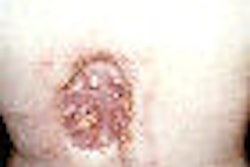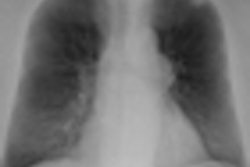A new study presented at this week's American College of Cardiology (ACC) meeting found that patients undergoing cardiac catheterization who received any of three major commercially available low-osmolar contrast media (LOCM) have low rates of postprocedure hemodialysis and in-hospital mortality.
Reducing patient reactions to contrast media has become a major priority in radiology. A number of recent studies have compared the adverse reaction rates of different contrast products, as well as the different reaction rates of the two newer classes of agents, low-osmolar contrast media and iso-osmolar contrast media.
In a poster presentation on Monday at the ACC meeting in Atlanta, Dr. James Min of NewYork-Presbyterian Hospital/Weill Cornell Medical Center in New York City presented a retrospective study that compared three major LOCM products in a database of more than 207,000 patients seen at 700 U.S. hospitals in 2007 and 2008.
Min said his research team performed the study as a means of analyzing patient contrast reactions using a more clinically relevant parameter than changes in serum creatinine levels, which has been the standard in previous studies for assessing signs of contrast-induced nephropathy (CIN). While serum creatinine changes can be a useful yardstick, many patients who have received contrast have changes in serum creatinine that meet the technical criteria for CIN, but never require additional clinical management.
"A commonly used measure of nephrotoxicity is CIN, where there is a rise in CIN," Min said. "However, in our study we used a patient-centered outcome. If a patient doesn't need hemodialysis, [CIN] doesn't matter to them."
The contrast products included in Min's analysis were iohexol (Omnipaque, GE Healthcare, Chalfont St. Giles, U.K.), iopamidol (Isovue, Bracco Diagnostics, Princeton, NJ), and ioversol (Optiray, Covidien Imaging Solutions, Hazelwood, MO). The study was funded by an unrestricted grant from GE.
Min and colleagues drew their patient population from the Premier Perspective database, with the study focusing on patients who received cardiac cath exams from January 1, 2007, to December 31, 2008. In all, 36,118 patients received iohexol, 36,089 were administered iopamidol, and ioversol was given to 135,619 patients. The researchers chose not to include more expensive iso-osmolar agents in their analysis because LOCM products are most commonly used for cardiac cath procedures, Min said.
The researchers measured the rates of in-hospital hemodialysis and in-hospital mortality for each of the three contrast agents, and are presenting at the ACC meeting a preliminary interpretation of the data based on multivariate logistic regression analysis.
They found that all three agents had low rates of hemodialysis, with no statistically significant differences between iohexol, with an event rate of 0.8%, and iopamidol, with an event rate of 1%. However, ioversol, with an event rate of 1%, demonstrated a statistically significant higher risk of hemodialysis compared to iohexol (odds ratio 1.28, 95% confidence interval [CI] 1.11-1.45).
The group found no difference among the three agents with respect to in-hospital mortality. With iohexol being the reference standard, the in-hospital mortality risk for iopamidol had an odds ratio of 0.94 (95% CI 0.83-1.07), and with ioversol the odds ratio was 1.0 (95% CI 0.90-1.1).
"LOCM appear generally safe and generally equivalent for patient risk of in-hospital mortality," Min said.
Is the statistically significant difference in hemodialysis rates between iohexol and iopamidol great enough to recommend one agent over the other? "We should at least consider it," Min said, although he acknowledged that the research presented at the ACC meeting represented a preliminary data analysis.
Indeed, a representative from iopamidol's manufacturer, Bracco, noted that in the study's data, patients who received iopamidol had higher rates of some types of comorbidities compared to iohexol. For example, 2.8% of iopamidol patients had acute renal insufficiency, compared to 1.8% for iohexol and 2.1% for ioversol, while 5.9% of iopamidol patients had chronic renal insufficiency, compared to 3.5% for iohexol and 3.7% for ioversol.
"It looks that the three study cohorts were not perfectly comparable," said Alberto Spinazzi, senior vice president of medical and regulatory affairs worldwide for Bracco. "The rate of chronic renal insufficiency was highest in the iopamidol group, as well as the rate of acute renal insufficiency. On the contrary, the rates of both acute and chronic renal insufficiency were lowest among the iohexol patients."
Representatives from Covidien were not available for comment as of press time.
By Brian Casey
AuntMinnie.com staff writer
March 17, 2010
Related Reading
Iodixanol and iopamidol show similar nephrotoxicity, November 25, 2009
Study: Iso-osmolar contrast not safer for kidneys, July 30, 2009
CT angiography unrelated to acute nephropathy, July 27, 2009
Contrast-induced nephropathy: Much ado about nothing? July 28, 2009
Acute kidney injury raises risk of long-term adverse outcomes, July 17, 2009
Copyright © 2010 AuntMinnie.com



















